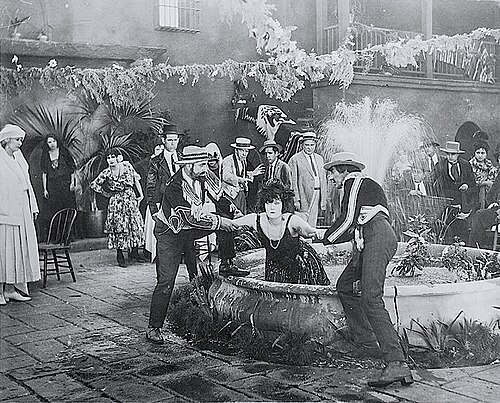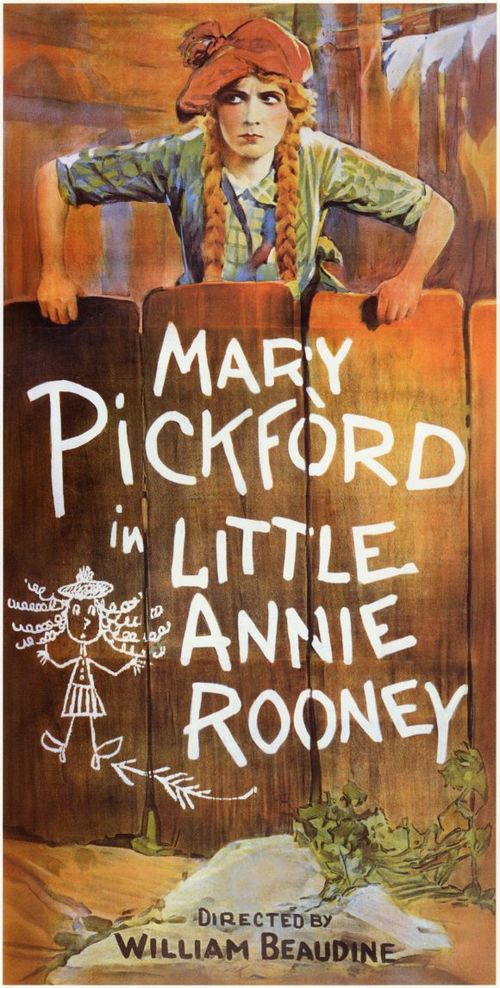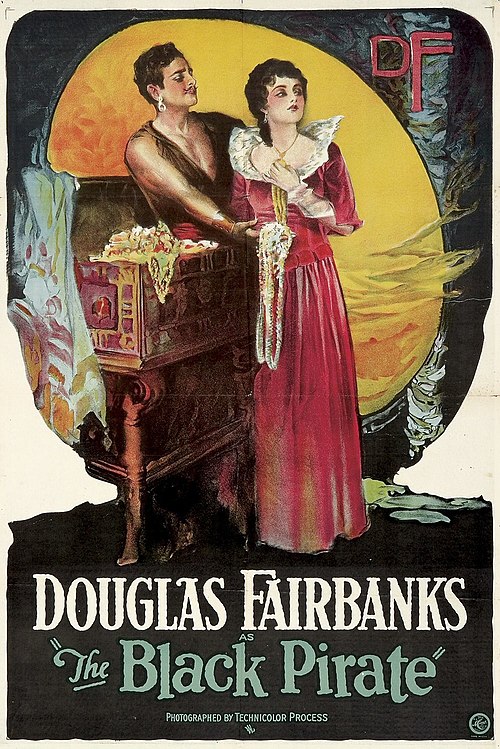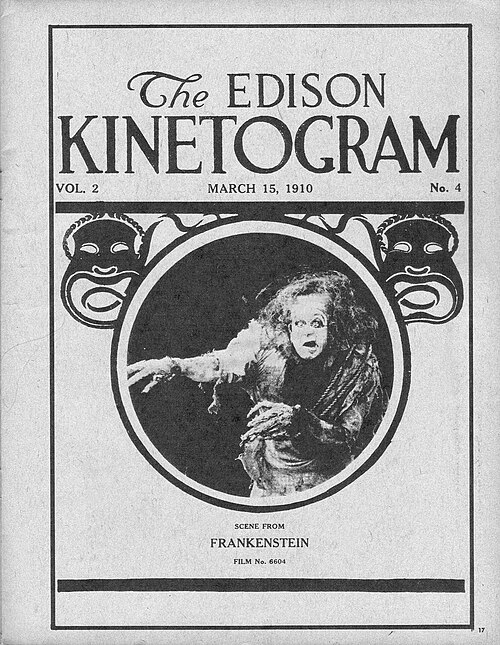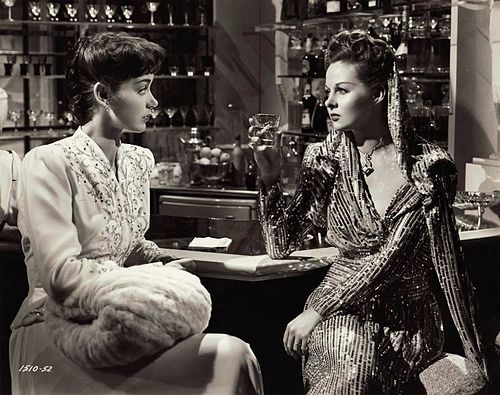Advertisement
Image source: Internet Archive (archive.org)
Download Movie [Video Format: MP4]
Movie Source: Internet Archive (archive.org)
Advertisement
Advertisement
Gung Ho!
1943
Though loaded with clichés such as rousing pre-battle speeches and over-dramatized death scenes, Gung Ho tells a more-or-less true story about the successful deployment of the Makin Raiders (Carlson's Raiders) on a minor Japanese stronghold (Makin Atoll). Fifteen thousand men volunteer, and in the end, only 200 make the team. These two hundred men will adopt the Chinese phrase Gung Ho (roughly translated as working harmoniously) as a philosophical approach to the task at hand.
The film begins with a tough Greek lieutenant (J. Carrol Naish) announcing that the United States Marine Corps is seeking volunteers for a hazardous mission and special unit. Sgt. "Transport" Anderof (Sam Levene) meets the commander of the unit, Lt. Col. Thorwald (Randolph Scott), who he has served with while stationed in China. Thorwald explains that he left the Corps to serve with the Chinese guerrillas fighting the Japanese during the Second Sino-Japanese War to learn their methods and has decided to form a unit using the qualities of Gung Ho or "work together".
Among the volunteers for the unit are a hillbilly (Rod Cameron), who responds to a gunnery sergeant's (Walter Sande) question whether he can kill someone with the fact that he already has; specifically a romantic rival. Alan Curtis is an ordained minister keeping his vocation a secret. Robert Mitchum is "Pig Iron"; a boxer from a background of poverty and hard work. Harold Landon is a young and small street kid who is initially rejected by Naish but wins him over, as both worked as dishwashers on ships bound to the United States from Piraeus, Greece. Noah Beery Jr. and David Bruce are rivals for United States Navy nurse Lt. Grace McDonald. Volunteers with brief screen time include a Filipino wishing to avenge his sister (who was left behind in Manilla and may have been raped or killed by the Japanese) who teaches the Raiders knife fighting, a veteran of the Spanish Civil War who sees the war as a continuation of the fight against fascism, and a Marine who honestly admits "I just don't like Japs".
The film moves rapidly in a documentary style, with stock footage of training narrated by Chet Huntley. Those who make it through the training are sent to Hawaii for further jungle warfare training, where they witness the damage of the attack on Pearl Harbor. In Hawaii they hear a radio bulletin of the announcement of the Battle of Guadalcanal. The Marines are ordered to board two submarines, the USS Nautilus and the USS Argonaut, destined for a commando raid on a Japanese-held island.
After a claustrophobic voyage, the Raiders invade the island from rubber boats. The Marine landing is met by fire from snipers hiding in palm trees. The Marines dispose of them, attack the Japanese headquarters, wipe out the garrison, destroy installations with explosives, then board the submarines for their return home.
Cast
Randolph Scott as Col. Thorwald
Alan Curtis as Pvt. John Harbison
Noah Beery Jr. as Cpl. Kurt Richter
J. Carrol Naish as Lt. C.J. Cristoforos
Sam Levene as Plt Sgt. Victor 'Transport' Magakian
David Bruce as Larry O'Ryan
Richard Lane as Capt. Dunphy
Walter Sande as Gunner McBride
Louis Jean Heydt as Lt. Roland Browning
Robert Mitchum as Pvt. 'Pig-Iron' Matthews
Rod Cameron as Pvt. Rube Tedrow
Grace McDonald as Kathleen Corrigan
Milburn Stone as Cmdr. Blake
Peter Coe as Pvt. Kozzarowski
Harold Landon as Pvt. Frankie Montana
Production
When producer Walter Wanger acquired the rights to the Makin Island raid and Lt. W.S LeFrançois' story, the United States Navy film liaison Lt. Albert J Bolton insisted that neither Carlson nor his executive officer James Roosevelt be singled out.[2] The screenplay depicted a fictional Lt. Col. Thorwald with no executive officer. The screenplay did include a character played by J. Carrol Naish, a Raider lieutenant of Greek extraction based on Marine Raider Lt. John Apergis[3] as well as Gunnery Sergeant Victor "Transport" Maghakian who served in the raid and survived the war. Though many incidents in the film did not occur in the real Makin Island raid, Carlson wrote of his being pleased with the film to Wanger.[4]
Like many other films about the United States Marine Corps, the movie was filmed at Marine Corps Recruit Depot San Diego and Camp Pendleton with Marine extras and technical advisors including Carlson, Maghakian and Lt. Wilfred Sylvio LeFrancois with all three men being awarded the Navy Cross[5] on the actual raid. The Japanese were played by Chinese and Filipino extras.[6]
Themes
The fast-moving film is a template for many war films and other adventure or western films where a group of professional killers and misfits in polite society are handpicked by an inspiring leader, trained to perfection, then use their initiative and skills in marksmanship, combat and knife fighting on an enemy who greatly outnumber them.
Thorwald/Carlson lectures throughout the film that the Japanese have no initiative and cannot think for themselves or deviate from a plan; thus unexpected action pays off. This is demonstrated in several scenes where a Marine defeats his opponent in unarmed combat by spitting tobacco in his eyes, a small but fast runner strips down to his trousers and quickly zig-zagc through enemy fire to hurl hand grenades at a machine-gun nest, Marines destroy a Japanese pillbox and its occupants by squashing both with a road construction steamroller, and a speechless Robert Mitchum who has been shot in the throat and is unable to give warning, kills a Japanese infiltrator attempting to kill the battalion surgeon (Milburn Stone) by throwing his knife in the Japanese soldier's back. The climax of the film has the Raiders painting a giant American flag on the roof of a building, then luring the counterattacking Japanese to the area where their own air force bombs and strafes them.
In contrast to the Japanese and the rest of the American military, Thorwald orders that his officers wear no rank insignia and have no special privileges. He tells his Raiders, "I will eat what you eat and sleep where you sleep" and participate in the same training. Thorwald's Marines participate in "Gung Ho Sessions" where they discuss the unit's plans and each man participates without regard to rank.
Reception
Bosley Crowther in a January 1944 review for The New York Times praised the film, its performances and settings but said "the stabbings and stickings go on ad nauseum. [sic] Gung Ho! is for folks with strong stomachs and a taste for the submachine gun".[7]
Re-issue[edit]
The film was re-released in the early 1950s by Realart Pictures who gave Robert Mitchum second billing on the posters.
The film has often been shown to recruits and Marines of the United States Marine Corps.
Influences on popular culture
In the early 1960s Louis Marx and Company came out with a "Gung Ho Commando Outfit" for children.[9]
See also
Public domain film
List of American films of 1943
List of films in the public domain in the United States
Among the volunteers for the unit are a hillbilly (Rod Cameron), who responds to a gunnery sergeant's (Walter Sande) question whether he can kill someone with the fact that he already has; specifically a romantic rival. Alan Curtis is an ordained minister keeping his vocation a secret. Robert Mitchum is "Pig Iron"; a boxer from a background of poverty and hard work. Harold Landon is a young and small street kid who is initially rejected by Naish but wins him over, as both worked as dishwashers on ships bound to the United States from Piraeus, Greece. Noah Beery Jr. and David Bruce are rivals for United States Navy nurse Lt. Grace McDonald. Volunteers with brief screen time include a Filipino wishing to avenge his sister (who was left behind in Manilla and may have been raped or killed by the Japanese) who teaches the Raiders knife fighting, a veteran of the Spanish Civil War who sees the war as a continuation of the fight against fascism, and a Marine who honestly admits "I just don't like Japs".
The film moves rapidly in a documentary style, with stock footage of training narrated by Chet Huntley. Those who make it through the training are sent to Hawaii for further jungle warfare training, where they witness the damage of the attack on Pearl Harbor. In Hawaii they hear a radio bulletin of the announcement of the Battle of Guadalcanal. The Marines are ordered to board two submarines, the USS Nautilus and the USS Argonaut, destined for a commando raid on a Japanese-held island.
After a claustrophobic voyage, the Raiders invade the island from rubber boats. The Marine landing is met by fire from snipers hiding in palm trees. The Marines dispose of them, attack the Japanese headquarters, wipe out the garrison, destroy installations with explosives, then board the submarines for their return home.
Cast
Randolph Scott as Col. Thorwald
Alan Curtis as Pvt. John Harbison
Noah Beery Jr. as Cpl. Kurt Richter
J. Carrol Naish as Lt. C.J. Cristoforos
Sam Levene as Plt Sgt. Victor 'Transport' Magakian
David Bruce as Larry O'Ryan
Richard Lane as Capt. Dunphy
Walter Sande as Gunner McBride
Louis Jean Heydt as Lt. Roland Browning
Robert Mitchum as Pvt. 'Pig-Iron' Matthews
Rod Cameron as Pvt. Rube Tedrow
Grace McDonald as Kathleen Corrigan
Milburn Stone as Cmdr. Blake
Peter Coe as Pvt. Kozzarowski
Harold Landon as Pvt. Frankie Montana
Production
When producer Walter Wanger acquired the rights to the Makin Island raid and Lt. W.S LeFrançois' story, the United States Navy film liaison Lt. Albert J Bolton insisted that neither Carlson nor his executive officer James Roosevelt be singled out.[2] The screenplay depicted a fictional Lt. Col. Thorwald with no executive officer. The screenplay did include a character played by J. Carrol Naish, a Raider lieutenant of Greek extraction based on Marine Raider Lt. John Apergis[3] as well as Gunnery Sergeant Victor "Transport" Maghakian who served in the raid and survived the war. Though many incidents in the film did not occur in the real Makin Island raid, Carlson wrote of his being pleased with the film to Wanger.[4]
Like many other films about the United States Marine Corps, the movie was filmed at Marine Corps Recruit Depot San Diego and Camp Pendleton with Marine extras and technical advisors including Carlson, Maghakian and Lt. Wilfred Sylvio LeFrancois with all three men being awarded the Navy Cross[5] on the actual raid. The Japanese were played by Chinese and Filipino extras.[6]
Themes
The fast-moving film is a template for many war films and other adventure or western films where a group of professional killers and misfits in polite society are handpicked by an inspiring leader, trained to perfection, then use their initiative and skills in marksmanship, combat and knife fighting on an enemy who greatly outnumber them.
Thorwald/Carlson lectures throughout the film that the Japanese have no initiative and cannot think for themselves or deviate from a plan; thus unexpected action pays off. This is demonstrated in several scenes where a Marine defeats his opponent in unarmed combat by spitting tobacco in his eyes, a small but fast runner strips down to his trousers and quickly zig-zagc through enemy fire to hurl hand grenades at a machine-gun nest, Marines destroy a Japanese pillbox and its occupants by squashing both with a road construction steamroller, and a speechless Robert Mitchum who has been shot in the throat and is unable to give warning, kills a Japanese infiltrator attempting to kill the battalion surgeon (Milburn Stone) by throwing his knife in the Japanese soldier's back. The climax of the film has the Raiders painting a giant American flag on the roof of a building, then luring the counterattacking Japanese to the area where their own air force bombs and strafes them.
In contrast to the Japanese and the rest of the American military, Thorwald orders that his officers wear no rank insignia and have no special privileges. He tells his Raiders, "I will eat what you eat and sleep where you sleep" and participate in the same training. Thorwald's Marines participate in "Gung Ho Sessions" where they discuss the unit's plans and each man participates without regard to rank.
Reception
Bosley Crowther in a January 1944 review for The New York Times praised the film, its performances and settings but said "the stabbings and stickings go on ad nauseum. [sic] Gung Ho! is for folks with strong stomachs and a taste for the submachine gun".[7]
Re-issue[edit]
The film was re-released in the early 1950s by Realart Pictures who gave Robert Mitchum second billing on the posters.
The film has often been shown to recruits and Marines of the United States Marine Corps.
Influences on popular culture
In the early 1960s Louis Marx and Company came out with a "Gung Ho Commando Outfit" for children.[9]
See also
Public domain film
List of American films of 1943
List of films in the public domain in the United States
Walter Wanger


